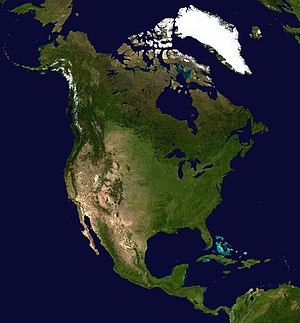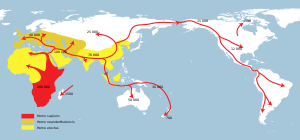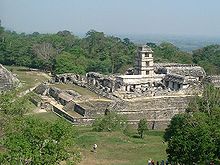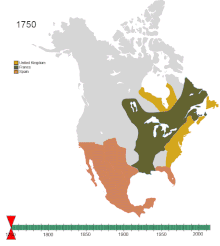From Wikipedia, the free encyclopedia
Trinity Church in
Manhattan; it has been seen as embodying the White Anglo-Saxon Protestant culture in the United States.
In the United States, White Anglo-Saxon Protestants or WASPs are an ethnoreligious group who are the white, upper-class, American Protestant historical elite, typically of British descent. WASPs dominated American society, culture, and politics for most of the history of the United States. From the 1950s, the New Left criticized the WASP hegemony and disparaged them as part of "The Establishment". Although the social influence of wealthy WASPs has declined since the 1940s, the group continues to play a central role in American finance, politics and philanthropy.
Anglo-Saxon refers to people of British ancestry, but WASP is sometimes used more broadly by sociologists and others to include all Protestant Americans of Northern European or Northwestern European ancestry. WASP is also used for elites in Australia, New Zealand, and Canada. The 1998 Random House Unabridged Dictionary says the term is "sometimes disparaging and offensive".
Naming
The Angles and Saxons were Germanic tribes that migrated to Great Britain near the end of antiquity and the beginning of the Middle Ages.
Anglian and Saxon kingdoms were established over most of what is
present-day England, and collectively they came to identify themselves
as "English", after England ('land of the Angles'), while the indigenous Celtic people were called British. Later, the name Anglo-Saxon was also applied to these people, reflecting their Germanic tribal origins; and, after the Norman conquest in 1066, Anglo-Saxon has been used to refer to the pre-invasion English people. Since the 19th century, Anglo-Saxon
has been in common use in the English-speaking world, but not in
Britain itself, to refer to Protestants of principally English descent. The W and P were added in the 1950s to form a humorous epithet to imply "waspishness" or someone likely to make sharp, slightly cruel remarks.
Political scientist Andrew Hacker used the term WASP in 1957, with W standing for 'wealthy' rather than 'white'. Describing the class of Americans that held "national power in its economic, political, and social aspects", Hacker wrote:
These 'old' Americans possess, for the most part, some common characteristics. First of all, they are 'WASPs'—in the
cocktail party jargon of the sociologists. That is, they are wealthy,
they are Anglo-Saxon in origin, and they are Protestants (and
disproportionately Episcopalian).
An earlier usage appeared in the African-American newspaper The New York Amsterdam News in 1948, when author Stetson Kennedy wrote:
In America, we find the WASPs
(White Anglo-Saxon Protestants) ganging up to take their frustrations
out on whatever minority group happens to be handy — whether Negro,
Catholic, Jewish, Japanese or whatnot.
The term was later popularized by sociologist and University of Pennsylvania professor E. Digby Baltzell, himself a WASP, in his 1964 book The Protestant Establishment: Aristocracy and Caste in America.
Baltzell stressed the closed or caste-like characteristic of the group
by arguing that "There is a crisis in American leadership in the middle
of the twentieth century that is partly due, I think, to the declining
authority of an establishment which is now based on an increasingly
castelike White-Anglo Saxon-Protestant (WASP) upper class."
Citing Gallup polling data from 1976, Kit and Frederica Konolige wrote in their 1978 book The Power of Their Glory, "As befits a church that belongs to the worldwide Anglican Communion, Episcopalianism has the United Kingdom
to thank for the ancestors of fully 49 percent of its members. ... The
stereotype of the White Anglo-Saxon Protestant (WASP) finds its fullest
expression in the Episcopal Church."
WASP is also used in Australia and Canada for similar elites. WASPs traditionally have been associated with Episcopal (or Anglican), Presbyterian, United Methodist, Congregationalist, and other mainline Protestant denominations; however, the term has expanded to include other Protestant denominations as well.
Anglo-Saxon in modern usage
The
concept of Anglo-Saxonism, and especially Anglo-Saxon Protestantism,
evolved in the late 19th century, especially among American Protestant
missionaries eager to transform the world. Historian Richard Kyle says:
Protestantism had not yet split into two mutually hostile
camps – the liberals and fundamentalists. Of great importance,
evangelical Protestantism still dominated the cultural scene. American
values bore the stamp of this Anglo-Saxon Protestant ascendancy. The
political, cultural, religious, and intellectual leaders of the nation
were largely of a Northern European Protestant stock, and they
propagated public morals compatible with their background.
Before WASP came into use in the 1960s, the term Anglo-Saxon served some of the same purposes. Like the newer term WASP, the older term Anglo-Saxon
was used derisively by writers hostile to an informal alliance between
Britain and the U.S. The negative connotation was especially common
among Irish Americans and writers in France. Anglo-Saxon, meaning in effect the whole Anglosphere, remains a term favored by the French, used disapprovingly in contexts such as criticism of the Special Relationship
of close diplomatic relations between the U.S. and the UK and
complaints about perceived "Anglo-Saxon" cultural or political
dominance. In December 1918, after victory in the World War, President
Woodrow Wilson told a British official in London: “You must not speak of
us who come over here as cousins, still less as brothers; we are
neither. Neither must you think of us as Anglo-Saxons, for that term can
no longer be rightly applied to the people of the United
States....There are only two things which can establish and maintain
closer relations between your country and mine: they are community of
ideals and of interests." The term remains in use in Ireland as a term for the British or English, and sometimes in Scottish Nationalist discourse. Irish-American humorist Finley Peter Dunne popularized the ridicule of "Anglo-Saxons", even calling President Theodore Roosevelt one. Roosevelt insisted he was Dutch. "To be genuinely Irish is to challenge WASP dominance", argues California politician Tom Hayden. The depiction of the Irish in the films of John Ford
was a counterpoint to WASP standards of rectitude. "The procession of
rambunctious and feckless Celts through Ford's films, Irish and
otherwise, was meant to cock a snoot at WASP or 'lace-curtain Irish' ideas of respectability."
In Australia, Anglo or Anglo-Saxon refers to people of English descent, while Anglo-Celtic includes people of Irish, Welsh, and Scottish descent.
In France, Anglo-Saxon refers to the combined impact of Britain and the United States on European affairs. Charles de Gaulle repeatedly sought to "rid France of Anglo-Saxon influence".
The term is used with more nuance in discussions by French writers on
French decline, especially as an alternative model to which France
should aspire, how France should adjust to its two most prominent global
competitors, and how it should deal with social and economic
modernization.
Outside of Anglophone countries, the term Anglo-Saxon and
its translations are used to refer to the Anglophone peoples and
societies of Britain, the United States, and countries such as
Australia, Canada, and New Zealand. Variations include the German Angelsachsen, French le modèle anglo-saxon, Spanish anglosajón, Dutch Angelsaksisch model [nl] and Italian Paesi anglosassoni [it].
19th-century Anglo-Saxonism
In the nineteenth century, Anglo-Saxons was often used as a synonym
for all people of English descent and sometimes more generally, for all
the English-speaking peoples of the world. It was often used in implying
superiority, much to the annoyance of outsiders. For example, American
clergyman Josiah Strong boasted in 1890:
In 1700 this race numbered less than 6,000,000 souls. In
1800, Anglo-Saxons (I use the term somewhat broadly to include all
English-speaking peoples) had increased to about 20,500,000, and now, in
1890, they number more than 120,000,000.
In 1893, Strong envisioned a future "new era" of triumphant Anglo-Saxonism:
Is it not reasonable to believe that this race is
destined to dispossess many weaker ones, assimilate others, and mould
the remainder until... it has Anglo-Saxonized mankind?
Other European ethnicities
A 1969 Time
article stated, "purists like to confine Wasps to descendants of the
British Isles; less exacting analysts are willing to throw in
Scandinavians, Netherlanders and Germans." The popular usage of the term has sometimes expanded to include not just Anglo-Saxon or English-American elites but also to people of other Protestant Northwestern European origin, including Protestant Dutch Americans, Scottish Americans, Welsh Americans, German Americans, and Scandinavian Americans.
The sociologist Charles H. Anderson writes, "Scandinavians are
second-class WASPs" but know it is "better to be a second-class WASP
than a non-WASP".
Sociologists William Thompson and Joseph Hickey described a further expansion of the term's meaning:
The term WASP has many meanings. In sociology it
reflects that segment of the U.S. population that founded the nation and
traced their heritages to...Northwestern Europe. The term...has become
more inclusive. To many people, WASP now includes most 'white' people
who are not ... members of any minority group.
Apart from Protestant English, German, Dutch, and Scandinavian
Americans, other ethnic groups frequently included under the label WASP include Americans of French Huguenot descent, Scotch-Irish Americans, Scottish Americans, Welsh Americans, Protestant Americans of Germanic Northwestern European descent in general, and established Protestant American families of "vague" or "mixed" Germanic Northwestern European heritage.
Culture
Historically,
the early Anglo-Protestant settlers in the seventeenth century were the
most successful group, culturally, economically, and politically, and
they maintained their dominance till the early twentieth century. Numbers of the most wealthy and affluent American families, such as Boston Brahmin, First Families of Virginia, Old Philadelphians, Tidewater, and Lowcountry Gentry or old money, were WASPs. Commitment to the ideals of the Enlightenment meant that they sought to assimilate newcomers from outside of the British Isles, but few were interested in adopting a Pan-European identity
for the nation, much less turning it into a global melting pot.
However, in the early 1900s, liberal progressives and modernists began
promoting more inclusive ideals for what the national identity of the
United States should be. While the more traditionalist segments of
society continued to maintain their Anglo-Protestant ethnocultural
traditions, universalism and cosmopolitanism started gaining favor among
the elites. These ideals became institutionalized after the Second
World War, and ethnic minorities started moving towards institutional
parity with the once dominant Anglo-Protestants.
Education
Some of the first colleges and universities in America, including Harvard, Yale, Princeton, Columbia, Dartmouth, Pennsylvania, Duke, Boston, Williams, Bowdoin, Middlebury, and Amherst, all were founded by mainline Protestant denominations.
Expensive, private prep schools and universities have historically been associated with WASPs. Colleges such as the Ivy League, the Little Ivies, and the Seven Sisters colleges are particularly intertwined with the culture.
Until roughly World War II, Ivy League universities were composed
largely of white Protestants. While admission to these schools is
generally based upon merit, many of these universities give a legacy preference
for the children of alumni in order to link elite families (and their
wealth) with the school. These legacy admissions allowed for the
continuation of WASP influence on important sectors of the US.
Members of Protestant denominations associated with WASPs have some of the highest proportions of advanced degrees. Examples include the Episcopal Church, with 76% of those polled having some college education, and the Presbyterian Church, with 64%.
According to Scientific Elite: Nobel Laureates in the United States by Harriet Zuckerman, between 1901 and 1972, 72% of American Nobel Prize laureates have come from a Protestant background,
mostly from Episcopalian, Presbyterian or Lutheran background, while
Protestants made up roughly 67% of the US population during that period. Of Nobel prizes awarded to Americans between 1901 and 1972, 84.2% of those in Chemistry, 60% in Medicine, and 58.6% in Physics were awarded to Protestants.
Religion
The White Anglo-Saxon Protestant upper class has largely held church membership in the mainline Protestant denominations of Christianity, chiefly the Presbyterian, Episcopalian, and Congregationalist traditions.
Citing Gallup polling data from 1976, Kit and Frederica Konolige wrote in their 1978 book The Power of Their Glory, "As befits a church that belongs to the worldwide Anglican Communion, Episcopalianism has the United Kingdom
to thank for the ancestors of fully 49 percent of its members. ... The
stereotype of the White Anglo-Saxon Protestant (WASP) finds its fullest
expression in the Episcopal Church."
Politics
From 1854 until about 1964, white Protestants were predominantly Republicans. More recently, the group is split more evenly between the Republican and Democratic parties.
Wealth
Episcopalians and Presbyterians
are among the wealthiest religious groups and were formerly
disproportionately represented in American business, law, and politics. Old money in the United States was typically associated with White Anglo-Saxon Protestant ("WASP") status, particularly with the Episcopal and Presbyterian Church. Some of the wealthiest and most affluent American families such as the Vanderbilts, Astors, Rockefellers, Du Ponts, Roosevelts, Forbes, Fords, Mellons, Whitneys, Morgans, and Harrimans are white primarily mainline Protestant families.
According to a 2014 study by the Pew Research Center,
Episcopalians ranked as the third wealthiest religious group in the
United States, with 35% of Episcopalians living in households with
incomes of at least $100,000.
While Presbyterians ranked as the fourth most financially successful
religious group in the United States, with 32% of Presbyterians living
in households with incomes of at least $100,000.
Location
View of Manhattan's
Upper East Side, which has traditionally been dominated by WASP families.
The Boston Brahmins, who were regarded as the nation's social and cultural elites, were often associated with the American upper class, Harvard University, and the Episcopal Church.
Like other ethnic groups, WASPs tend to concentrate within close
proximity of each other. These areas are often exclusive and associated
with top schools, high incomes, well-established church communities, and
high real-estate values.
For example, in the Detroit area, WASPs predominantly possessed the
wealth that came from the new automotive industry. After the 1967 Detroit riot, they tended to congregate in the Grosse Pointe suburbs. In Chicagoland, white Protestants primarily reside in the North Shore suburbs, the Barrington area in the northwest suburbs, and in Oak Park and DuPage County in the western suburbs. Traditionally, the Upper East Side in Manhattan has been dominated by wealthy White Anglo-Saxon Protestant families.
Social values
David Brooks, a columnist for The New York Times
who attended an Episcopal prep school, writes that WASPs took pride in
"good posture, genteel manners, personal hygiene, pointless discipline,
the ability to sit still for long periods of time." According to the essayist Joseph Epstein, WASPs developed a style of understated quiet leadership.
A common practice of WASP families is presenting their daughters
of marriageable age (traditionally at the age of 17 or 18 years old) at a
débutante ball, such as the International Debutante Ball at the Waldorf Astoria Hotel in New York City.
Social Register
America's
social elite was a small, closed group. The leadership was well-known
to the readers of newspaper society pages, but in larger cities it was
hard to remember everyone, or to keep track of the new debutantes and marriages. The solution was the Social Register,
which listed the names and addresses of about 1 percent of the
population. Most were WASPs, and they included families who mingled at
the same private clubs, attended the right teas and cotillions,
worshipped together at prestige churches, funded the proper charities,
lived in exclusive neighborhoods, and sent their daughters to finishing
schools and their sons away to prep schools. In the heyday of WASP dominance, the Social Register delineated high society. According to The New York Times, its influence had faded by the late 20th century:
Once, the Social Register was a
juggernaut in New York social circles... Nowadays, however, with the
waning of the WASP elite as a social and political force, the register's
role as an arbiter of who counts and who doesn't is almost an
anachronism. In Manhattan, where charity galas are at the center of the
social season, the organizing committees are studded with luminaries
from publishing, Hollywood and Wall Street and family lineage is almost
irrelevant.
Fashion
In 2007, The New York Times reported that there was a rising interest in the WASP culture. In their review of Susanna Salk's A Privileged Life: Celebrating WASP Style, they stated that Salk "is serious about defending the virtues of WASP values, and their contribution to American culture."
By the 1980s, brands such as Lacoste and Ralph Lauren and their logos became associated with the preppy fashion style which was associated with WASP culture.
Social and political influence
The term WASP became associated with an upper class
in the United States due to over-representation of WASPs in the upper
echelons of society. Until the mid–20th century, industries such as
banks, insurance, railroads, utilities, and manufacturing were dominated
by WASPs.
The Founding Fathers of the United States were mostly educated, well-to-do, of British ancestry, and Protestants. According to a study of the biographies of signers of the Declaration of Independence by Caroline Robbins:
The Signers came for the most part from an educated
elite, were residents of older settlements, and belonged with a few
exceptions to a moderately well-to-do class representing only a fraction
of the population. Native or born overseas, they were of British stock
and of the Protestant faith.
Catholics in the Northeast and the Midwest—mostly immigrants and their descendants from Ireland and Germany as well as southern and eastern Europe—came to dominate Democratic Party politics in big cities through the ward boss system. Catholic politicians were often the target of WASP political hostility.
Political scientist Eric Kaufmann argues that "the 1920s marked the high tide of WASP control". In 1965, Canadian sociologist John Porter, in The Vertical Mosaic,
argued that British origins were disproportionately represented in the
higher echelons of Canadian class, income, political power, the clergy,
the media, etc. However, more recently, Canadian scholars have traced
the decline of the WASP elite.
Post–World War II
According to Ralph E. Pyle:
A number of analysts have suggested
that WASP dominance of the institutional order has become a thing of
the past. The accepted wisdom is that after World War II, the selection
of individuals for leadership positions was increasingly based on
factors such as motivation and training rather than ethnicity and social
lineage.
Many reasons have been given for the decline of WASP power, and books have been written detailing it. Self-imposed diversity incentives opened the country's most elite schools. The GI Bill
brought higher education to new ethnic arrivals, who found middle class
jobs in the postwar economic expansion. Nevertheless, white Protestants
remain influential in the country's cultural, political, and economic
elite. Scholars typically agree that the group's influence has waned
since 1945, with the growing influence of other ethnic groups.
After 1945, Catholics and Jews made strong inroads in getting jobs in the federal civil service, which was once dominated by those from Protestant backgrounds, especially the Department of State. Georgetown University,
a Catholic school, made a systematic effort to place graduates in
diplomatic career tracks. By the 1990s, there were "roughly the same
proportion of WASPs, Catholics, and Jews at the elite levels of the
federal civil service, and a greater proportion of Jewish and Catholic
elites among corporate lawyers." The political scientist Theodore P. Wright, Jr., argues that while the Anglo ethnicity of the U.S. presidents from Richard Nixon through George W. Bush
is evidence for the continued cultural dominance of WASPs, assimilation
and social mobility, along with the ambiguity of the term, has led the
WASP class to survive only by "incorporating other groups [so] that it
is no longer the same group" that existed in the mid-20th century.
Very few Jewish lawyers were hired by White Anglo-Saxon Protestant ("WASP") upscale white-shoe law firms,
but they started their own. The WASP dominance in law ended when a
number of major Jewish law firms attained elite status in dealing with
top-ranked corporations. Most white-shoe firms also excluded Roman
Catholics.
As late as 1950 there was not a single large Jewish law firm in New
York City. However, by 1965 six of the 20 largest firms were Jewish; by
1980 four of the ten largest were Jewish.
Two famous confrontations signifying a decline in WASP dominance were the 1952 Senate election in Massachusetts, in which John F. Kennedy, a Catholic of Irish descent, defeated WASP Henry Cabot Lodge, Jr., and the 1964 challenge by Arizona Senator Barry Goldwater—an Episcopalian
who had solid WASP credentials through his mother, but whose father was
Jewish, and was seen by some as part of the Jewish community—to Nelson Rockefeller and the Eastern Republican establishment, which led to the liberal Rockefeller Republican wing of the party being marginalized by the 1980s, overwhelmed by the dominance of Southern and Western conservatives.
However, asking "Is the WASP leader a dying breed?", journalist Nina
Strochlic in 2012 pointed to eleven WASP top politicians, ending with
Republicans G.H.W. Bush, elected in 1988, his son George W. Bush,
elected in 2000 and 2004, and John McCain, who was nominated but
defeated in 2008. Mary Kenny argues that Barack Obama,
although famous as the first Black president, exemplifies highly
controlled "unemotional delivery" and "rational detachment"
characteristic of WASP personality traits. Indeed, he attended upper
class schools such as Harvard, and was raised by his WASP mother Ann Dunham and the Dunham grandparents in a family that dates to Jonathan Singletary Dunham, born in Massachusetts in 1640.
Inderjeet Parmar and Mark Ledwidge argue that Obama pursued a typically
WASP-inspired foreign policy of liberal internationalism.
In the 1970s, a Fortune
magazine study found one-in-five of the country's largest businesses
and one-in-three of its largest banks was run by an Episcopalian. More recent studies indicate a still-disproportionate, though somewhat reduced, influence of WASPs among economic elites.
The reversal of WASP fortune was exemplified by the Supreme
Court. Historically, almost all its justices were of WASP or Protestant
Germanic heritage. The exceptions included seven Catholics and two Jews. Since the 1960s, an increasing number of non-WASP justices have been appointed to the Court. From 2010 to 2017, the Court had no Protestant members, until the appointment of Neil Gorsuch in 2017.
The University of California, Berkeley,
once a WASP stronghold, has changed radically: only 30% of its
undergraduates in 2007 were of European origin (including WASPs and all
other Europeans), and 63% of undergraduates at the University were from
immigrant families (where at least one parent was an immigrant),
especially Asian. Once also a WASP bastion, as of 2010 Harvard University enrolled 9,289 non-Hispanic white students (44%, of which approximately 30% were Jewish), 2,658 Asian American students (13%), 1,239 Hispanic students (6%), and 1,198 African American students (6%).
A significant shift of American economic activity toward the Sun Belt
during the latter part of the 20th century and an increasingly
globalized economy have also contributed to the decline in power held by
Northeastern WASPs. James D. Davidson et al. argued in 1995 that while
WASPs were no longer solitary among the American elite, members of the
Patrician class remained markedly prevalent within the current power
structure.
Other analysts have argued that the extent of the decrease in
WASP dominance has been overstated. In response to increasing claims of
fading WASP dominance, Davidson, using data on American elites in
political and economic spheres, concluded in 1994 that, while the WASP
and Protestant establishment had lost some of its earlier prominence,
WASPs and Protestants were still vastly overrepresented among America's
elite.
In August 2012 the New York Times, reviewed the religion
of the nine top national leaders: the presidential and vice-presidential
nominees, the Supreme Court justices, the House Speaker, and the Senate
majority leader. There were nine Catholics (six justices, both
vice-presidential candidates, and the Speaker), three Jews (all from the
Supreme Court), two Mormons (including the Republican presidential
nominee Mitt Romney) and one African-American Protestant (incumbent President Barack Obama). There were no white Protestants.
Hostile epithet
Sociologist John W. Dykstra in 1958 described the "white AngloSaxon Protestant" as "Mr. Bigot." Historian Martin Marty said in 1991 that WASPs "are the one ethnoreligioracial group that all can demean with impunity."
In the 21st century, WASP is often applied as a derogatory label to those with social privilege who are perceived to be snobbish and exclusive, such as being members of restrictive private social clubs. Kevin M. Schultz stated in 2010 that WASP is "a much-maligned class identity....Today, it signifies an elitist snoot." A number of popular jokes ridicule those thought to fit the stereotype.
Occasionally, a writer praises the WASP contribution, as conservative historian Richard Brookhiser
did in 1991, when he said the "uptight, bland, and elitist" stereotype
obscures the "classic WASP ideals of industry, public service, family
duty, and conscience to revitalize the nation." Likewise, conservative writer Joseph Epstein
praised WASP history in 2013 and asked, "Are we really better off with a
country run by the self-involved, over-schooled products of modern
meritocracy?" He deplores how the WASP element lost its self-confidence
and came under attack as "The Establishment."
In media
American films, including Annie Hall and Meet the Parents, have used the conflicts between WASP families and urban Jewish families for comedic effect.
The 1939 Broadway play Arsenic and Old Lace, later adapted into a Hollywood film released in 1944,
ridiculed the old American elite. The play and film depict "old-stock
British Americans" a decade before they were tagged as WASPS.
The playwright A. R. Gurney
(1930-2017), himself of WASP heritage, has written a series of plays
that have been called "penetratingly witty studies of the WASP
ascendancy in retreat". Gurney told the Washington Post in 1982:
WASPs do have a culture –
traditions, idiosyncrasies, quirks, particular signals and totems we
pass on to one another. But the WASP culture, or at least that aspect of
the culture I talk about, is enough in the past so that we can now look
at it with some objectivity, smile at it, and even appreciate some of
its values. There was a closeness of family, a commitment to duty, to
stoic responsibility, which I think we have to say weren't entirely bad.
In Gurney's play The Cocktail Hour (1988), a lead character
tells her playwright son that theater critics "don't like us... They
resent us. They think we're all Republicans, all superficial and all
alcoholics. Only the latter is true."
Filmmaker Whit Stillman, whose godfather was E. Digby Baltzell, has made films dealing primarily with WASP characters and subjects. Stillman has been called the "WASP Woody Allen." His debut 1990 film Metropolitan
tells the story of a group of college-age Manhattan socialites during
débutante season. A recurring theme of the film is the declining power
of the old Protestant élite.














